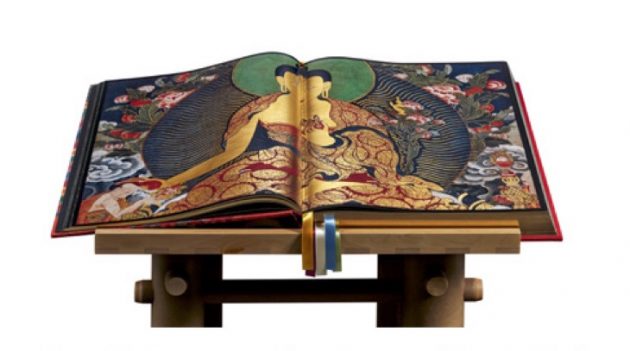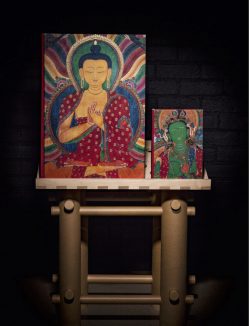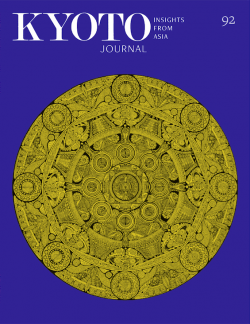

Murals of Tibet. Photographed and introduced by Thomas Laird, with contributing authors Robert Thurman, Heather Stoddard, and Jakob Winkler. Berlin: Taschen, 2018.
By all standards, Murals of Tibet is not an ordinary book of Tibetan art history: it is itself a monument to Tibetan art. It offers high-quality images of major murals from all over Tibet in very large format (50 by 70 cm). The photographer, Thomas Laird, who has explored the remote reaches of the Tibetan plateau for more than a decade, has explained that he “yoked [his] technical passion to a passion for the spirit and for the art,” and this is what accounts for the excellence of the images. The book is indeed an extraordinary technological achievement, employing “a new multi-image digital photography” that can capture “some walls that are as wide as 10 meters, in life-size resolution.” The techniques used to reproduce, print, and assemble the book are no less sophisticated.
The high-tech wizardry, though, is joined with wisdom: the book captures the visual productions that have, over the centuries, encapsulated the spiritual legacy of Tibetan Buddhist monasteries. Turning the pages of the book we enter the paintings, and see from within their sacred worldview. Laird, playing astutely with the Indo-European etymology of the Sanskrit word yoga, explains that this book “yokes” the world of material techniques with the realities of the spiritual world. This was indeed the original gesture of the traditional artists in Tibet: their paintings and architectural designs were material expressions of the Tibetan Buddhist path, and a means to support and cultivate its inner dimensions. It may be argued that the development of Tibetan Buddhist culture (and of any sustainable civilization?) lies precisely at this junction. By re-actualizing such an integrative approach in our times, this book is both a precious archive for cultural preservation and an innovative medium for its revitalization.
From Drathang monastery to Tsaparang and Toling (close to the revered Mount Kailash), and through the great historical sites of Lhasa, the book guides the reader on a pilgrimage through the sacred places of Tibet, and across more than a millennium of artworks. The many cultural influences—Indian, Chinese, Kothanese, Kashimiri—give rise to rich symbolism and detailed ornamentation, images that convey to the eyes, to the mind, and to the heart, an enormous amount of the knowledge accumulated by generations of Buddhist adepts.
A scholarly companion book, with contributions by the best Tibetologists in the West, accompanies the images to help the reader to navigate through such an ocean of wisdom. Traditionally, objects of devotion (in Tibetan: mögü), these murals aim to make the fruits of spiritual awakening directly felt; this is the grace of “liberation upon seeing” (tongdröl). It inspires the pilgrim to embark on an inner journey, guiding the pilgrim’s progress, particularly by providing support for spiritual exercises of visualisation. Especially impressive are the 17th century murals of the Lukhang, next to the Potala Palace and commissioned by the 5th Dalai Lama to depict the practices of Dzogchen, the “Great Perfection,” considered by the School of the Ancients (Nyingmapa) as the pinnacle of all spiritual paths. This case exemplifies the role of such paintings as illustrated forms of practical instruction for meditation and yoga. From a Buddhist perspective, and transcending our fascination with exotic art, such a book will be truly beneficial if, after having journeyed in the book’s pages to the mountain retreats that they contain, we are brought closer to ourselves, to our real nature, from which emerges a spontaneous and genuine care for others.


Advertise in Kyoto Journal! See our print, digital and online advertising rates.
Recipient of the Commissioner’s Award of the Japanese Cultural Affairs Agency 2013